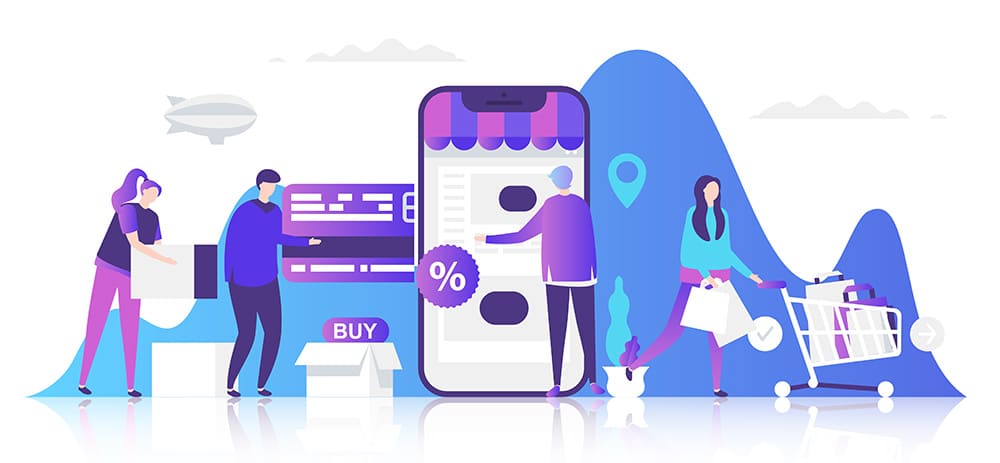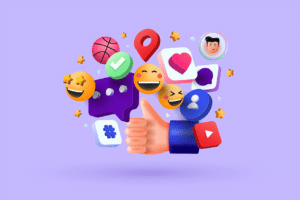Good website design is like good food: It’s important, but it’s ultimately an experience. If you can make a customer feel welcome and trust your brand as soon as they get to your site, then you’ve got a good chance of winning their business. But how do you do that? The secret is focusing on ease of use and trustworthiness — not just pretty pictures. In this post we’ll go over 10 web design tips of best practices for making sure that your website has what customers need to find what they want from your company or organization.

Your 10 Web Design Tips Starts Now!
Create a simple navigation system.
In order to ensure that your website design is successful, you need to create a navigation system that will help users find what they are looking for quickly and easily.
One of the most important aspects of good navigation is keeping it simple. This means avoiding long drop-down menus, confusing navigation options and making sure that customers can find what they need with minimal effort.
You also need to make sure that the same navigation system works throughout your entire site. Don’t use different navigation systems on different pages or in different sections of your site; instead, use the same navigational tools everywhere – this way customers won’t get lost by trying to figure out where they are on your site (and potentially leaving) when looking at new content! Finally, make sure that any links which lead outside of your website are clearly marked so visitors know exactly where they’re going before clicking away from yours!
Offer good quality images and videos.
Images and videos are a great way to show off your products or services and their functionality. Showing how something works can be much more effective than simply telling someone how it works.
Take advantage of this by using images with product or service descriptions, or filming a video that shows how your product or service benefits customers.
Stick to strong and secure best practices.
A strong website design is not only attractive, but it’s also secure. In order to build a successful website, you need to make sure that your site meets current best practices.
These are some tips for making sure that your site is as secure as possible:
- Keep your website up-to-date with the latest technology. This ensures that your site will be compatible with any new browsers or devices being used by potential customers.
- Use a trusted host provider—it’s important that you use a provider who can provide the level of service required by the size and complexity of your business’ needs.
- Use a secure payment provider—payments made through credit cards online are vulnerable to fraud unless precautions are taken against hackers stealing data or eavesdropping on internet traffic between customers and retailers (eCommerce).
- Use strong passwords—using weak passwords makes it easy for hackers and criminals who want access into sensitive accounts like bank accounts or email inboxes where they can steal personal information such as social security numbers and credit card information which could result in identity theft.
Improve page load times.
A few seconds could be the difference between a customer converting or going back to their search results.
A study conducted by Google found that one second of latency (i.e., slow load times) resulted in a 7% increase in bounces, while two seconds of latency caused a 20% increase. The bottom line: it’s important to make sure your website loads quickly!
Many factors contribute to page load times, including images and scripts on your website, as well as the technology used to run your site (for example, WordPress vs Drupal). A caching plugin such as W3 Total Cache is a great option to start!
READ: 5 Best SEO Tools for Rankings
Reduce friction in the buying process.
There are a few things you can do to reduce friction in the buying process. The first thing you need to do is make it easy for customers to find and complete their purchase. In most cases, this means using a clear call-to-action button on every page of your website. If a customer finds what they want and wants it now, all they have to do is click on the button (or link) and follow through with payment info or whatever else is needed at that moment.
Also important: use secure payment methods such as PayPal or Stripe if possible so users don’t have any doubts about their credit card info being safe while purchasing from you online. And don’t forget returns! It’s vital that customers feel confident about returning purchases if they aren’t satisfied—and this requires clearly stated return policies so everyone knows what’s expected when something goes wrong with an order. If a customer feels like there’s nothing in place for them when something goes wrong, then why take a risk with your business?
Go easy on pop-ups and ads.
Pop-ups and ads can be a good way to get people to click on your site, but they can also be very annoying. If you’re going to use pop-ups, make sure that your content is relevant and valuable. Customers don’t want to be tricked into clicking on something that seems like it might be interesting or important; they just want the information they were looking for without having to give up their personal information or sign up for something else in order to get it.
If you’re going with an ad strategy instead of using pop-ups, make sure you only target customers who are likely interested in what you have to offer—otherwise, all of your efforts may end up being wasted money!
Use an intuitive color palette.
Color is a powerful tool for web design, and it’s something that should be used to help you win customers.
Color can be used to attract attention, create meaning, create a mood or tell a story. It can also be used to create visual hierarchy on your website so that your visitors know what’s most important (and therefore where they should spend their time). Finally, you’ll use color to help build your brand identity.
Make it mobile-friendly and responsive.
Mobile-friendly and responsive websites have become increasingly important for all businesses. The reasons for this are simple: more people are using mobile devices to browse the internet, and those who do use them prefer a seamless experience that doesn’t require multiple clicks to view content on a regular website.
Mobile-friendly websites will automatically adjust themselves based on the device being used to access it; because of this, they’re also called fluid designs. Responsive design is slightly different—instead of adjusting itself based on the type of device being used, it adjusts itself based on screen size (iPad vs small phone).
If you have a business website that isn’t designed with mobile devices in mind, you may find yourself losing customers as they try unsuccessfully to navigate through your site while trying to read from their small screens or tablets.
Keep up with the trends — but don’t overdo it!
It’s tempting to try to be trendy when designing a website; however, this can backfire if you’re not careful. When designing for your target audience, remember that you want them to feel like your business is one they can trust.

On the other hand — if there’s no reason for something on your site (like an old logo or font), get rid of it! Sometimes people are attached to things even though they aren’t useful anymore or don’t reflect who they’ve become or where they’re going in life/business/etcetera… If something isn’t working well anymore but hasn’t been updated yet (or at all), then it might be time for an overhaul!
Focus on ease of use and trustworthiness to bring customers back for more
While this might seem obvious, it’s worth repeating: your website’s design should be easy to use. If it’s hard for customers to navigate and find what they need, they’ll leave and find another site that makes their life easier.
You can also increase trustworthiness by using SSL certificates (certificates that encrypt the connection between your server and a visitor’s browser). This ensures your customers’ data is secure when it passes through your site. You don’t want someone else accessing personal information like credit card numbers or other financial details; otherwise you run the risk of losing those customers’ trust.
And finally, make sure your website loads fast on all devices—not just desktops but also laptops, smartphones, tablets etc.—so people don’t get frustrated while waiting for pages to load (or worse yet…leave in exasperation).
Conclusion
Web design isn’t an easy thing to get right. There are a lot of moving parts, and each one can make or break your business. But by following the tips above, you can create a great website that will appeal to customers and help them feel at ease with your brand. If you have a project you’d like to discuss, we’d love to hear about it! Also, why not check out our website design service?





